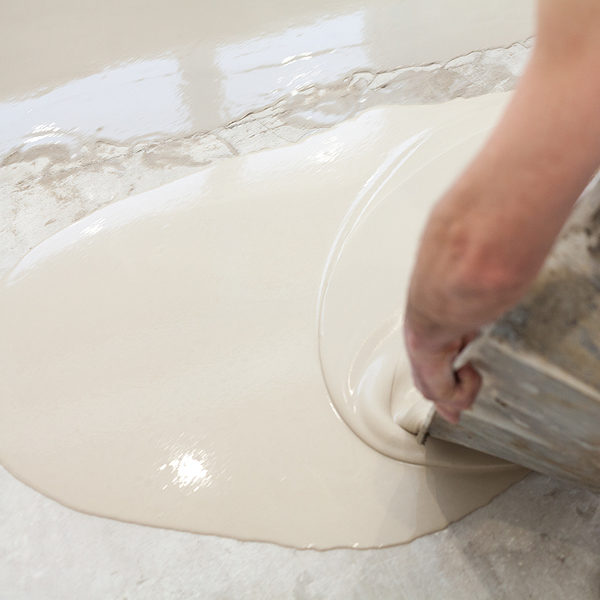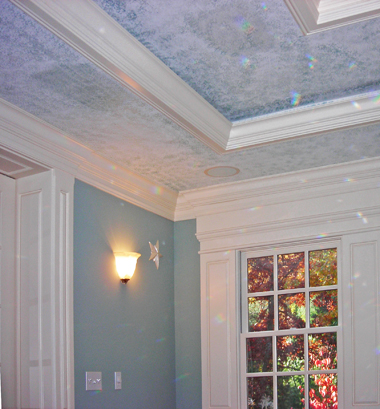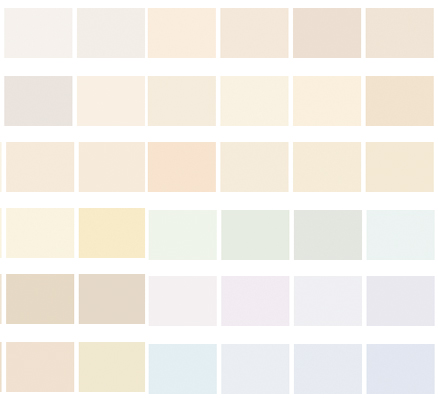Choosing the right shade of paint for your project can be a long and difficult process. It’s a good thing that’s the only choice you’ll have to make, right? Unfortunately, it’s not. Another critical decision is what type of paint you need for your surface.
We’re sure a few people think, “I’ll just grab a can of the first thing I see, and it will be fine.” This might get the job done in some situations. However, the more substantial likelihood is that your project will need to be repainted sooner, show wear or damage faster, and, depending on the surface, maybe not even stick. It’s all about the best way to match paint to the surface texture. Here are the four most common types of surfaces and how to decide which paint is best for each.
 Interior surfaces
Interior surfaces
Ceilings, walls, and woodwork can all be painted with latex paint. But that’s not all you need to know. Ceilings should be covered only with paint designed for them. These are usually of the flat white variety as they’ll show fewer lines from your roller. Plus, they won’t yellow over time.
Latex is also the best choice for walls. Choose a finish matching the space, like an eggshell for bedrooms or dining rooms and satin for high-traffic areas or cabinets.
Latex is also a good choice for woodwork. Prime bare wood first, then choose a latex paint with a semi-gloss finish for the most accessible cleaning.
Metal surfaces
Metal can be a complex medium. Depending on the type of metal, you may need to do some prep work to ensure that the paint adheres to these surfaces.
Iron and steel surfaces should first be properly primed. Only then can you paint them. In addition, you should only use latex or oil-based paints.
In contrast, latex paints can be applied to aluminum and galvanized metal without priming the surface. As a final note, all metals, regardless of the type, should first be primed if you are using oil-based paint.
Masonry
Painting your fireplace is trending among home DIYers, and we’ve seen many of our Franklin Painting customers take on this project. After all, it’s a fairly easy way to update the look of your space without spending a fortune to redo the entire area. Choose an acrylic latex specially designed for masonry for best results.
 Flooring
Flooring
Floors can be painted. But they are also very high-traffic areas. Give yourself the best foot forward (pun intended!) by choosing a product specifically designed for floors. This will ensure it holds up to daily traffic, spills, heavy scrubbing, and abrasion.
We know how to match paint regardless of the surface texture
Some homeowners enjoy painting and want to take on this task for themselves. For others, this couldn’t be further from the truth — and that’s where we come in.
We love what we do. Our staff will treat your project as their own, always providing you with a professional, high-quality finished product. Contact Franklin Painting, LLC by calling 877-646-7774 or by visiting our website!
Frequently Asked Questions About Finding the Correct Type of Paint for Your Project
1. How do I choose between water-based and oil-based paints?
Choosing between water-based and oil-based paints depends on the surface you’re painting and the desired finish. Water-based paints, also known as latex paints, are quick-drying, have less odor, and are easy to clean up with soap and water. They’re ideal for most indoor walls and ceilings. On the other hand, oil-based paints are durable and stain-resistant, making them suitable for trim, moldings, and surfaces requiring a high-gloss finish. However, they take longer to dry and require mineral spirits for cleanup.
2. What paint should I use for a bathroom or kitchen?
Semi-gloss or high-gloss water-based (latex) paint is recommended for bathrooms and kitchens where moisture and humidity are common. These finishes resist moisture well and are easy to clean, making them ideal for these high-traffic areas. Additionally, some paints are specifically formulated with mildewcides to combat mold and mildew growth in damp environments.
3. Can I use exterior paint indoors?
It’s not recommended. Exterior paints are formulated to withstand weather conditions and may contain chemicals unsafe for indoor use, potentially leading to health risks. Interior paints are designed to adhere to indoor surfaces and meet safety standards for indoor air quality. For the best results and safety, stick to using interior paints for indoor projects and exterior paints for outdoor projects.
4. How do I know which paint finish to choose?
The choice of paint finish depends on the room you’re painting and how durable the finish needs to be. Here’s a quick guide:
- Matte or flat finishes are great for low-traffic areas and ceilings, as they hide imperfections but are less durable.
- Eggshell and satin finishes offer a slight sheen, making them more durable and suitable for living rooms, bedrooms, and hallways.
- Semi-gloss and high-gloss finishes are highly durable and easy to clean, perfect for kitchens, bathrooms, trim, and other areas that may require frequent cleaning.
Choosing the correct type of paint for your project ensures durability, ease of maintenance, and the overall success of your renovation or decorating effort.

Frank Campanelli, the esteemed founder of Franklin Painting LLC, has been leading the company since 1986. He takes immense pride in the stellar reputation his dedicated team has built by consistently delivering top-notch service to each customer.


 Interior surfaces
Interior surfaces

